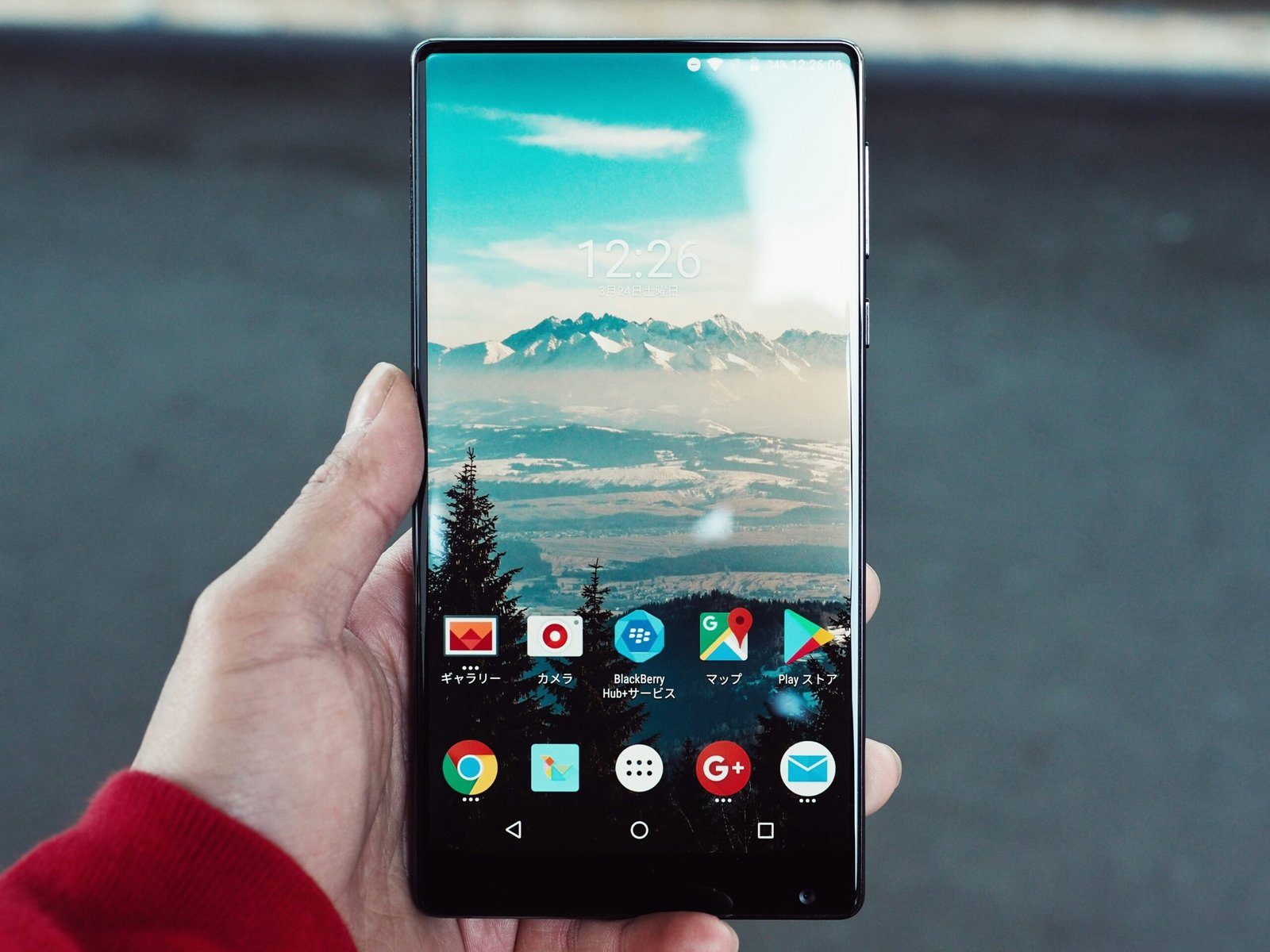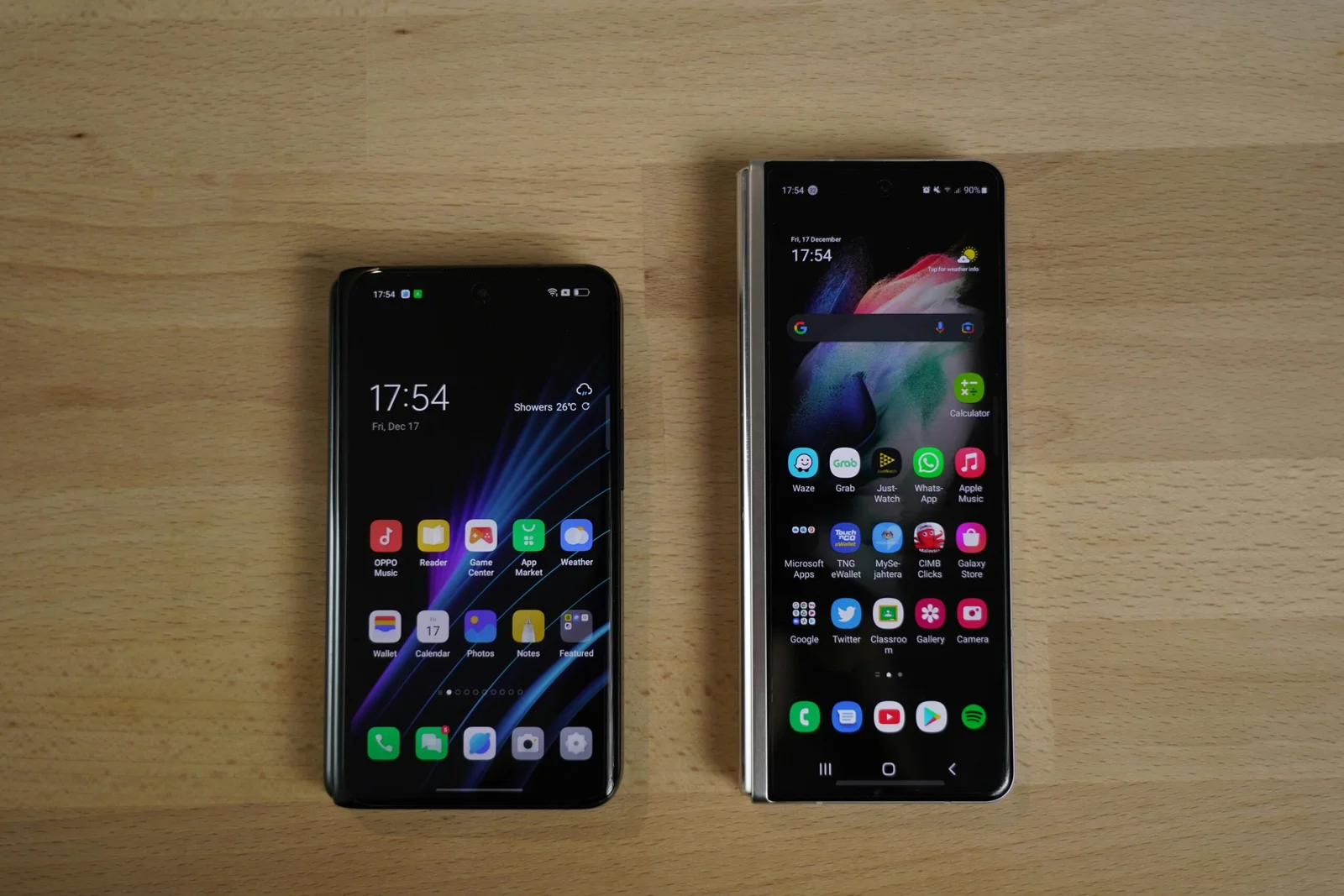
Introduction to Mobile Phone Design Evolution
The journey of mobile phone design has been nothing short of transformative, evolving from the cumbersome, brick-like models of the 1980s to the sleek, multifunctional devices we rely on today. Early mobile phones were primarily designed for basic communication, characterized by their large size, limited battery life, and minimal functionality. However, rapid technological advancements have significantly reshaped the landscape of mobile phone design over the decades.
In the 1990s, the advent of digital technology and the miniaturization of components allowed for more compact and efficient designs. Mobile phones began to feature smaller form factors, enhanced battery life, and monochromatic displays. The introduction of SMS (Short Message Service) marked the beginning of mobile text communication, expanding the functionality of these devices beyond voice calls.
The early 2000s witnessed a significant shift with the emergence of feature phones, which introduced more advanced functionalities such as color screens, cameras, and multimedia capabilities. This era also saw the rise of iconic designs, such as the flip phone and the slider phone, which brought a new level of style and convenience to mobile devices.
The most profound transformation in mobile phone design came with the introduction of the smartphone. The launch of the iPhone in 2007 by Apple set a new standard for mobile devices, featuring a large touchscreen interface, internet connectivity, and an array of applications that turned the phone into a portable computer. This innovation spurred a wave of similar devices from other manufacturers, leading to the current era of high-performance smartphones.
Today, mobile phones are characterized by their sleek, minimalist designs, powerful processors, high-resolution cameras, and expansive app ecosystems. The emphasis on user experience and aesthetic appeal continues to drive design improvements, paving the way for the upcoming trends and predictions in mobile phone design.
“`html
Foldable and Flexible Displays
The advent of foldable and flexible displays marks a significant shift in mobile phone design, promising to revolutionize how consumers interact with their devices. At the heart of this innovation lies cutting-edge technology that allows screens to bend and fold without compromising display quality. This is achieved through the use of advanced materials such as organic light-emitting diode (OLED) panels, which are both lightweight and flexible. Manufacturers like Samsung and Huawei have already introduced models like the Galaxy Z Fold and Mate X, showcasing the potential of this technology.
Foldable phones offer a unique blend of portability and enhanced screen real estate, providing users with the convenience of a compact device that can transform into a larger, tablet-like screen. This dual functionality is particularly appealing for multitaskers and media consumers who can benefit from the expanded display for activities such as gaming, streaming, and productivity tasks. Moreover, flexible displays pave the way for innovative form factors, potentially leading to rollable or even stretchable screens in the future.
However, the adoption of foldable and flexible displays is not without challenges. Durability remains a primary concern, as the repeated folding and unfolding can stress the materials and mechanisms involved. Early models have faced issues such as screen creasing and hinge failures, prompting manufacturers to invest heavily in research and development to enhance the robustness of these devices. Additionally, the complexity of the technology contributes to higher production costs, resulting in premium price points that may limit widespread adoption initially.
User experience is another critical factor. While the novelty of foldable phones is undeniable, their practical benefits must outweigh the potential drawbacks. Software optimization is crucial to ensure a seamless transition between folded and unfolded states, and developers must create applications that leverage the unique capabilities of these devices. As the technology matures and economies of scale bring down costs, foldable and flexible displays are poised to become more mainstream, offering an exciting glimpse into the future of mobile phone design.
Advancements in Biometric Security
Biometric security features have become a cornerstone of mobile phone design, offering enhanced security and user convenience. Current technologies, including fingerprint sensors, facial recognition, and iris scanning, have already revolutionized how users interact with their devices. The evolution of these features indicates a promising future where biometric security will be further refined and integrated into more aspects of mobile phone functionality.
Fingerprint sensors, initially introduced as a novel method for unlocking devices, have advanced significantly. Modern iterations feature under-display sensors and even ultrasonic technology, which improves accuracy and speed. Similarly, facial recognition has evolved from simple 2D image matching to sophisticated 3D depth sensing, providing higher security levels and reducing the risk of unauthorized access. Iris scanning, once a niche feature, is also gaining traction due to its high accuracy and difficulty to spoof.
Future innovations in biometric security are set to enhance user convenience and device protection further. One anticipated development is the integration of multiple biometric methods, allowing for multi-layer authentication. This approach could combine fingerprint, facial, and iris recognition, ensuring that even if one method is compromised, the device remains secure. Additionally, advancements in artificial intelligence (AI) and machine learning (ML) are expected to improve the accuracy and reliability of biometric systems, minimizing false positives and negatives.
Moreover, biometric data might be integrated with other mobile phone functionalities, offering seamless and secure experiences. For instance, biometric authentication could be used for mobile payments, access to sensitive apps, and personalized user settings. This integration ensures that only the rightful owner can make transactions, open confidential applications, or access personalized content.
As mobile phones continue to evolve, biometric security will likely play an even more critical role in safeguarding user data and enhancing the overall user experience. The focus on developing more robust, accurate, and integrated biometric systems underscores the importance of security in the future of mobile phone design.
AI and Personalization in Mobile Phones
Artificial intelligence (AI) is revolutionizing the design and functionality of mobile phones, leading to more personalized and intuitive user experiences. Currently, AI capabilities in mobile devices include features such as voice assistants, predictive text, and advanced camera functionalities. Voice assistants like Siri, Google Assistant, and Alexa have become indispensable tools for users, offering hands-free control and seamless integration with various applications and services.
Predictive text and autocorrect are other notable AI-driven features that enhance user convenience. By analyzing typing patterns and frequently used phrases, these tools can significantly speed up communication and reduce the likelihood of errors. Additionally, AI-powered cameras can recognize scenes, adjust settings automatically, and even suggest the best angles for capturing photos, elevating the quality of mobile photography.
Looking ahead, AI is poised to further transform mobile phone design and user experience. Future advancements could include more sophisticated natural language processing (NLP) capabilities, enabling voice assistants to understand context and nuance better. This would make interactions with devices more natural and efficient. Moreover, AI could play a crucial role in developing smarter interfaces that adapt to individual user preferences and habits, offering a truly personalized experience.
Imagine a mobile phone that learns your daily routines and suggests actions accordingly, such as reminding you to leave for an appointment based on traffic conditions or recommending new apps that align with your interests. AI could also enhance security features by using biometric data, such as facial recognition and fingerprint scanning, to create a more secure and personalized environment for users.
In essence, AI is not just an add-on feature but a fundamental aspect of mobile phone design that will continue to evolve. As AI technology advances, we can expect mobile phones to become even more personalized, intuitive, and capable of meeting the unique needs of each user.
5G and Beyond: Connectivity Innovations
The advent of 5G technology has significantly transformed mobile phone design and functionality. With its unprecedented data speeds and remarkably low latency, 5G is opening up new horizons for mobile applications and user experiences. The increased bandwidth allows for faster download and upload speeds, making it possible to stream high-definition videos, engage in seamless video conferencing, and enjoy more immersive gaming experiences on mobile devices.
One of the most notable impacts of 5G is its influence on the internal architecture of mobile phones. To accommodate the demands of 5G connectivity, manufacturers have had to innovate in areas such as antenna design, battery efficiency, and heat dissipation. This has led to the development of more advanced and sophisticated mobile phone internals, ensuring that devices can handle the enhanced performance capabilities that 5G offers.
Looking ahead, the next generation of connectivity technologies promises even more groundbreaking advancements. Beyond 5G, we anticipate the emergence of 6G, which is expected to deliver even faster speeds, lower latency, and greater reliability. 6G could potentially enable real-time holographic communication, ultra-high-definition virtual reality, and enhanced Internet of Things (IoT) integration. These innovations will further revolutionize the way we interact with our mobile devices and the world around us.
Furthermore, the continuous evolution of connectivity technologies will drive new possibilities for mobile applications. From augmented reality (AR) and virtual reality (VR) experiences to autonomous vehicles and smart cities, the potential applications of next-generation connectivity are vast and varied. As these technologies mature, we can expect mobile phones to become even more integral to our daily lives, serving as hubs for an increasingly interconnected and intelligent ecosystem.
In conclusion, the future of mobile phone design is inextricably linked to the advancements in connectivity. As we move beyond 5G and towards the next era of connectivity innovations, the possibilities for mobile technology are limitless. The integration of these cutting-edge technologies will undoubtedly shape the landscape of mobile phones, ushering in a new era of enhanced functionality and user experiences.
Sustainable and Eco-Friendly Design
In recent years, the importance of sustainability in mobile phone design has gained significant traction. As environmental concerns become increasingly paramount, manufacturers are exploring innovative ways to create eco-friendly phones. One of the primary strategies is the use of recycled materials. Companies are now incorporating recycled plastics, metals, and glass into their devices, significantly reducing the demand for virgin resources. This not only minimizes the environmental footprint of production but also promotes a circular economy.
Another critical aspect of sustainable mobile phone design is the reduction of electronic waste. With millions of phones being discarded annually, the industry faces a colossal challenge in managing e-waste. To address this, several manufacturers are developing modular phones that can be easily repaired or upgraded. By allowing consumers to replace individual components rather than purchasing entirely new devices, these modular designs extend the lifespan of mobile phones and curb waste generation.
Looking ahead, the future of sustainable mobile phone design is poised to incorporate even more groundbreaking advancements. One prediction is the increased use of biodegradable materials. Researchers are actively investigating organic compounds that can decompose naturally without harming the environment. Additionally, the implementation of solar-powered charging systems is expected to become more widespread, reducing the reliance on electricity and furthering the sustainability agenda.
The impact of these sustainable design trends on the industry is profound. Companies that prioritize eco-friendly practices are likely to gain a competitive edge, as consumers become more environmentally conscious. Moreover, regulatory bodies worldwide are tightening e-waste management policies, compelling manufacturers to innovate and adapt. Sustainable design is not just a trend but a necessity that will shape the future of mobile phones, driving the industry towards more responsible and eco-conscious practices.
Enhanced Augmented Reality (AR) and Virtual Reality (VR) Capabilities
The rapid advancements in augmented reality (AR) and virtual reality (VR) technologies have significantly shaped the mobile phone landscape. Currently, AR and VR applications are predominantly seen in gaming, where they offer immersive experiences that blur the lines between the digital and physical worlds. Popular games like Pokémon GO and AR-enhanced features in mobile apps have demonstrated the potential of AR, while VR headsets paired with smartphones have provided users with engaging virtual experiences.
Looking ahead, the integration of AR and VR capabilities in mobile phones is expected to evolve dramatically. Future mobile phones will likely feature enhanced AR and VR functionalities, pushing the boundaries of what these technologies can achieve. One anticipated development is the incorporation of more sophisticated AR applications in education. Imagine students using their smartphones to explore historical events, conduct virtual dissections in biology, or visualize complex mathematical concepts in 3D. Such applications could revolutionize educational experiences, making learning more interactive and engaging.
In the realm of gaming, the future of AR and VR on mobile phones holds exciting possibilities. Developers are expected to create even more realistic and immersive environments, leveraging the power of advanced processors and enhanced graphics capabilities. Mobile phones equipped with AR and VR could enable users to participate in large-scale, multiplayer virtual games, or even transform their physical surroundings into interactive gaming arenas.
Beyond gaming and education, AR and VR technologies are poised to impact various other fields. For instance, in retail, customers could use AR to virtually try on clothes or visualize how furniture would look in their homes. In healthcare, AR could assist surgeons with real-time, 3D visualizations of patients’ anatomy, enhancing precision during procedures. Mobile phones with built-in AR and VR capabilities would serve as versatile tools across these diverse applications.
To accommodate these advanced AR and VR capabilities, future mobile phone designs will likely feature more robust hardware, including advanced sensors, cameras, and processors. These enhancements will ensure seamless, high-quality AR and VR experiences, making mobile phones indispensable tools for both everyday use and specialized applications.
The Role of Wearables and Integration with Other Devices
The landscape of mobile phone design is becoming increasingly interconnected with the realm of wearable technology. As the demand for more seamless and intuitive user experiences grows, the integration of mobile phones with wearables such as smartwatches and fitness trackers is gaining momentum. This synergy is not merely a passing trend but a pivotal aspect of the future of mobile technology.
Currently, the integration between mobile phones and wearables primarily revolves around enhanced communication and health tracking. Smartwatches, for instance, allow users to receive notifications, control music, and even make calls without having to reach for their phones. Fitness trackers sync with mobile devices to provide comprehensive health metrics, from steps taken to heart rate monitoring, offering a holistic view of one’s physical activity and overall well-being.
Looking ahead, the future of wearables integration with mobile phones promises even more sophisticated developments. One significant advancement is the prospect of more advanced biometric sensors. These sensors could provide real-time health diagnostics, potentially alerting users to health anomalies before they become serious issues. The integration with mobile devices will enable users to access their health data instantly, fostering a more proactive approach to personal health management.
Furthermore, the integration is expected to extend beyond wearables to include other smart devices in the Internet of Things (IoT) ecosystem. For example, mobile phones could seamlessly connect with smart home devices, enabling users to control home security systems, lighting, and climate controls directly from their phones or wearable devices. This interconnectedness will create a more cohesive and convenient user experience, where multiple devices work in harmony to simplify daily tasks.
In essence, the role of wearables and their integration with mobile phones is set to redefine how we interact with technology. As advancements continue, the lines between different devices will blur, leading to a more unified and efficient technological environment that enhances the quality of life for users worldwide.






